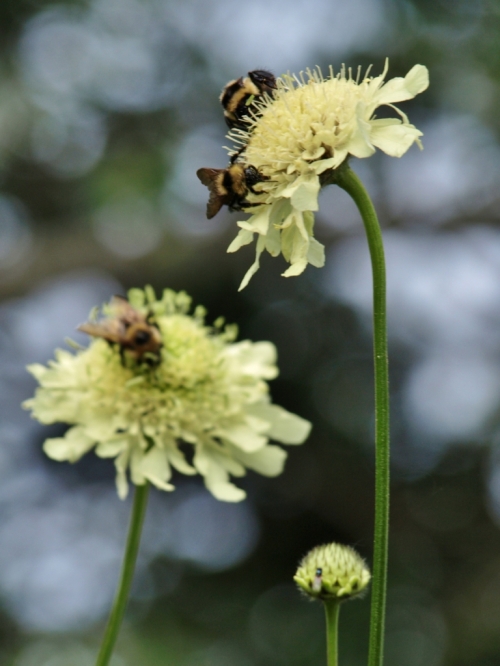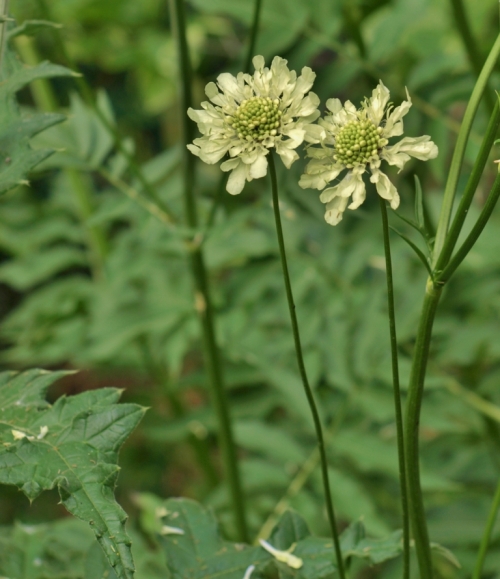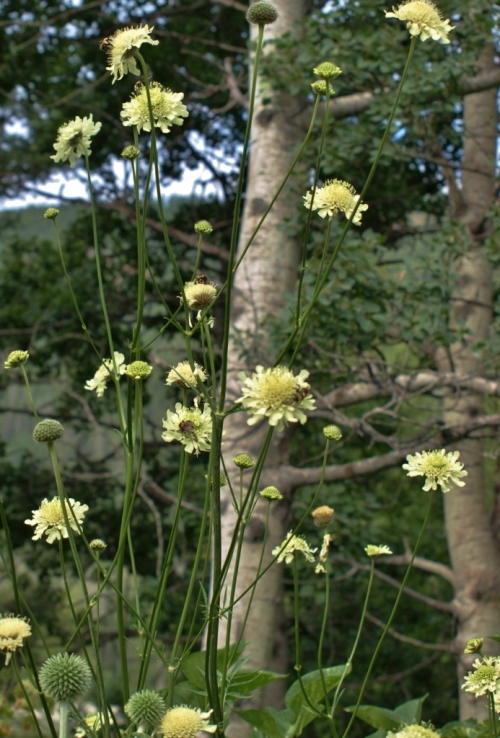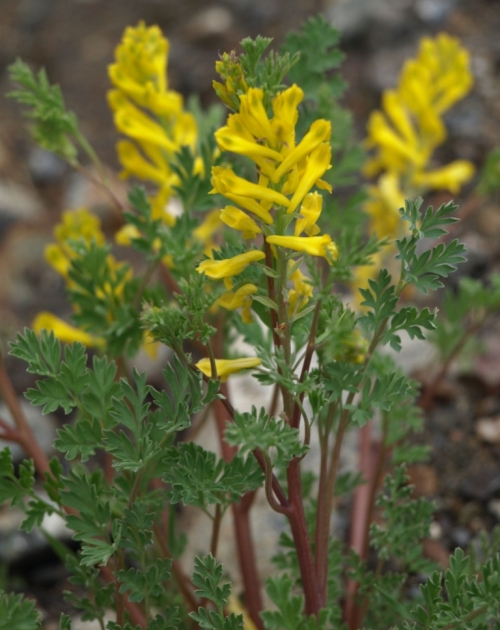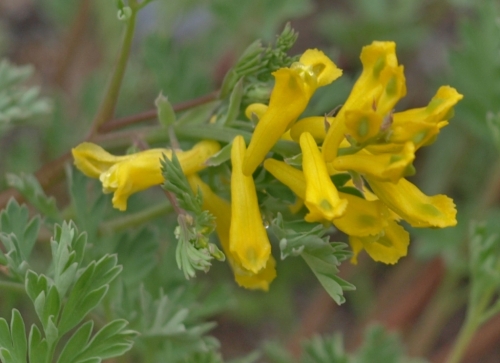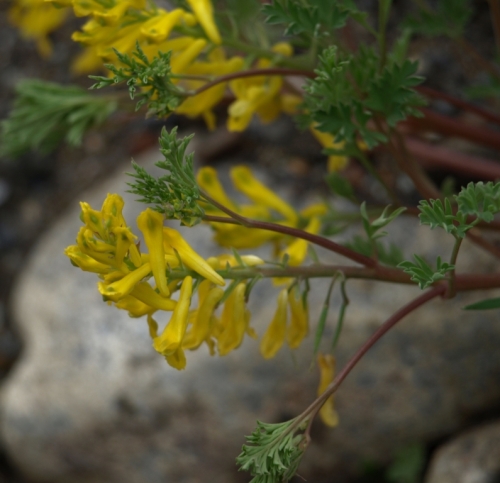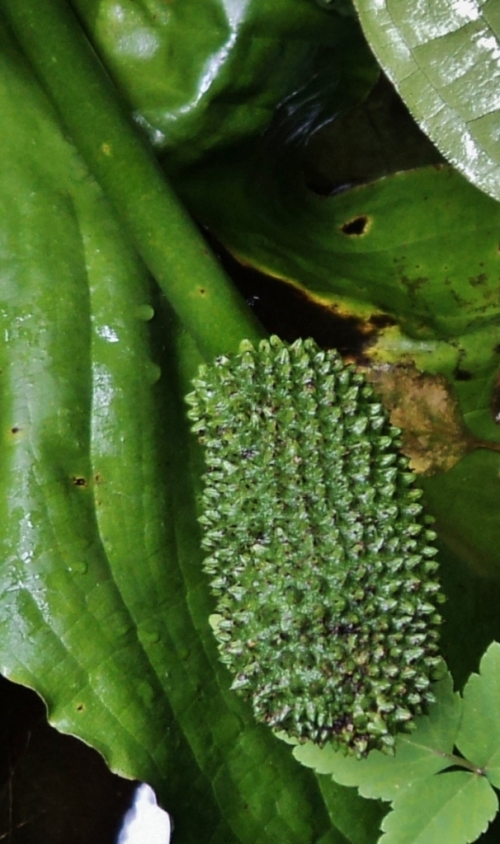
Cushion Spurge – Euphorbia polychroma (syn. E. epithymoides) – Prince George, B.C. – May 18, 2014 Image: HFN
Perennial. Zone 1. Euphorbiaceae. Native of Europe from southern Germany to the Ukraine, Bulgaria, Greece and Turkey, where it grows in dry forests, mixed meadows, and on rocky hillsides.
Euphorbia was named by Linnaeus in 1753 for Euphorbus, the Greek physician of King Juba II (circa 12 B.C.E.) of ancient Numidia and Mauretania (approximately present-day Morocco), who reportedly discovered medicinal uses for the local species. While Linnaeus assigned the species name epithymoides for this plant, it was renamed polychroma in the 1850s by yet another classifying botanist, Anton Josef Kerner, and this name soon took precedence and is the more commonly recognized designation today. Polychroma is after the Greek polu – ‘many’ – and xrwma – ‘colour’, a reference to the shaded colours of the bracted stem tops and ornate flower clusters.
Sun to part shade; average conditions. This appears to be a deer resistant plant – something to note for those of you afflicted by these increasingly bold and destructive garden pests.
It’s well into May, and everywhere I go these days I note the unmistakably glow of this unique specimen plant. It flourishes happily in mature, well established gardens as much as in newer, more avant-garde plantings accenting newly built homes in the posher parts of town. When (and where) the lilacs bloom, then (and there) too the cushion spurge.
I first became aware of this rather unusual and eye-catching ornamental during our first spring living in an older neighbourhood in a small Alberta town. Many of the front porches of the modest clapboard-sided 1930s’ and 40s’ era homes were flanked by perfectly globular, neon-yellow-tipped twin bushes. Some kind of exotic shrub? – I wondered to myself, until a visit to the botanical garden at the Calgary Zoo acquainted me with its Latin name, and I was able to track it down in the gardening books. (This was long pre-internet – I smile at the memory of how laborious this sort of rather basic research used to be, before the wonders of the Google image search!)

The natural form of this plant is neatly globular, though it may occasionally “birdsnest” with summer thunderstorms. If this happens, a hard trim to within 6 inches or so of the crown will result in quick regrowth to tidy cushion shape. Image: HFN
Cushion spurge grows to 18 inches tall and 2 ft. wide where happy – which is most places, as it is an adaptable, good-natured thing. It thrives in sun to part shade, and in modestly moist to dry soils, though it doesn’t care for overly soggy ground. Once established it is very drought tolerant, though it will definitely appreciate the occasional soaking in hot summers.
Clumps of woody-based stems are lined with whorls of soft green, rounded foliage, which are tipped with the modified leaves commonly referred to as bracts, though the correct term in this case is cyathium leaves. These turn a vivid, glowing, chartreuse-yellow, centered with clusters of tiny, even brighter yellow petal-less florets. These clusters include nectar-rich glands – nectaries – which reward foraging pollinators. I have not noticed that bees are particularly attracted to the blooms – though they do visit – but the highest traffic seems to be small flies, and ants and other crawling insects.

Note the small visitor. Image: HFN

An even closer view showing flower structure, and the downy hairs which give the entire plant its velvety texture. Image: HFN
After blooming and pollination – peak bloom time is all through May and into June – the yellow colour fades to a uniform green. Seed capsules form which eventually pop open later in the summer, catapulting seeds out into the garden, where they sprout in modest numbers. Seedlings are easily removed or transplanted to more desirable locations, where they quickly settle down to the business of growing and forming yet another perfect little globe.
Cushion spurge remains attractive through summer, and can be left to fend for itself or clipped back to produce fresh foliage. The plant fades to yellow in the autumn, frequently showing a red stage before the leaves finally wither after the last, hardest frosts.
Several “improved” (or perhaps one might say “enhanced”) cultivars of Euphorbia polychroma are popular in the nursery trade, including the burgundy-blushed ‘Bonfire’, a patented selection of the Euphorbia polychroma ‘purpurea’ sport which has been grown as a desirable rarity for many years, sometimes under the cultivar name ‘Candy’, and the white-pink-green ‘First Blush’. Of these two types I much prefer the red-leaved variety, as I’ve noticed that the white-variegated form is much less vigorous, and seems to show a high percentage of deformed and puckered leaves.

Euphorbia polychrome ‘purpurea’ – red-leaved form – an excellent specimen plant, slightly more restrained and measurably smaller than the green-leaved original. Hill Farm, May 21, 2014. Image: HFN

E. polychroma ‘purpurea’ shows its richest dark red shading just before the yellow bracts fully develop; after blooming it fades to a uniform green. Image: HFN
The common form of this handsome plant is a venerable garden old-timer, having been grown for centuries both for ornament and for occasional medicinal use. John Gerard’s masterwork The herball, or Generall historie of plantes, first published in England in 1633, reported of Spurge that “…the juice or milke is good to stop hollow teeth…” A modern commentator theorizes that the poisonous latex probably destroyed the nerve endings. The specific species of Euphorbia referred to is unknown, though all share the same milky (and irritating) sap.
Another medicinal use, and the origin of the common name of this very large genus (over 2000 species, found worldwide), is that of a purgative – a vigorous laxative – though one that was prescribed with some caution, as the violence of its action could be fatal if the decoction was too strong. From the French medical term describing the process, “espurgier”, came the English “purge”, and hence “spurge”, or so the theorizing goes. Though we no longer find ourselves partaking of the plant in any way except that of enjoying its attractive appearance, it is a good idea to treat the plant with sensible respect.
The sap of some species was used to beautify the complexion, and to remove warts, but the herbalists warned about the dangers of letting it get into the eyes, as it could cause severe damage, even blindness, a caveat which has been brought forward to the present day. Some people experience a skin rash from handling the cut foliage, so it is best to be on the safe side and use gloves while pruning. Avoid contact with the milky sap, and supervise young garden visitors if they are too young to heed “don’t touch” warnings.
Don’t let this last bit about the fearsome qualities of the sap put you off – this is a very widely grown plant and incidents of problems with it are exceedingly rare. It doesn’t need much fussing, and can safely be handled with the same common sense that applies throughout the garden. “Don’t put the monkshood leaves in the salad; don’t poke yourself in the eye with the spurge.” There, see how easy that is?! 🙂
One final note. Euphorbia polychroma/epithymoides was awarded the Royal Horticultural Society’s prestigious Award of Garden Merit in 1993, confirming its excellent ornamental qualities to the world at large. Experienced gardeners will have taken this as a confirmation of what they already knew. This is a quietly grand garden plant.
Read Full Post »
